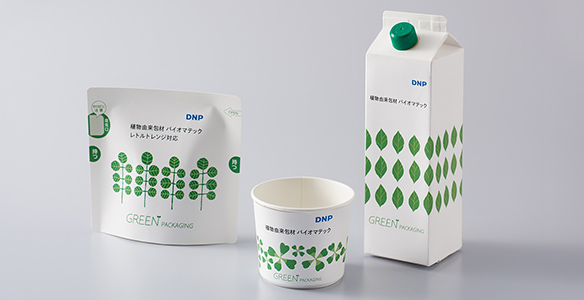Breaking Down the Benefits: Is Biodegradable Packaging the Superior Choice Over Plastic?
2 min read
In today's environmentally conscious world, the debate between biodegradable packaging and traditional plastic packaging has gained significant attention. As concerns about pollution and waste continue to rise, it is crucial to evaluate the advantages and disadvantages of these two packaging options. This blog post aims to delve into the topic and provide a comprehensive analysis of whether biodegradable packaging is truly better than plastic.
- Understanding Biodegradable Packaging:
Biodegradable packaging refers to materials that can break down naturally and decompose into harmless substances over time. These materials are typically derived from renewable resources such as plant-based polymers or compostable materials. The key advantage of biodegradable packaging lies in its ability to reduce environmental impact and minimize waste accumulation. - The Environmental Impact of Plastic Packaging:
Plastic packaging, on the other hand, poses significant environmental challenges. Traditional plastics are derived from non-renewable resources and can take hundreds of years to decompose. Improper disposal of plastic packaging leads to pollution of land, water bodies, and ecosystems. The accumulation of plastic waste has become a global concern, prompting the search for more sustainable alternatives. - Advantages of Biodegradable Packaging:
a. Reduced Pollution: Biodegradable packaging offers a solution to the pollution caused by plastic waste. As it breaks down naturally, it does not leave behind harmful residues or microplastics that can contaminate the environment.
b. Resource Conservation: Biodegradable packaging materials are often derived from renewable resources, reducing reliance on fossil fuels and promoting sustainability.
c. Waste Management: Biodegradable packaging can be composted, providing a valuable source of organic matter for soil enrichment. This helps divert waste from landfills and contributes to a circular economy. - Considerations and Limitations:
a. Time and Conditions: Biodegradable packaging requires specific conditions, such as exposure to sunlight, oxygen, and moisture, to decompose effectively. In certain environments, such as landfills with limited oxygen, biodegradation may be slower or even halted.
b. Production and Cost: Biodegradable packaging materials can be more expensive to produce compared to traditional plastics. However, as technology advances and demand increases, economies of scale may help reduce costs over time. - The Importance of Proper Disposal:
Regardless of the type of packaging used, proper disposal is crucial for minimizing environmental impact. Biodegradable packaging should be disposed of in composting facilities or designated recycling programs to ensure it can decompose efficiently. Plastic packaging, on the other hand, should be recycled whenever possible to reduce waste accumulation.
Conclusion:
While biodegradable packaging offers several advantages over traditional plastic packaging, it is essential to consider various factors before concluding that it is the superior choice. The environmental benefits, reduced pollution, and resource conservation associated with biodegradable packaging make it a promising alternative. However, challenges such as decomposition conditions and production costs need to be addressed. Ultimately, a combination of responsible consumer behavior, industry innovation, and government support will be crucial in transitioning towards a more sustainable packaging future.

